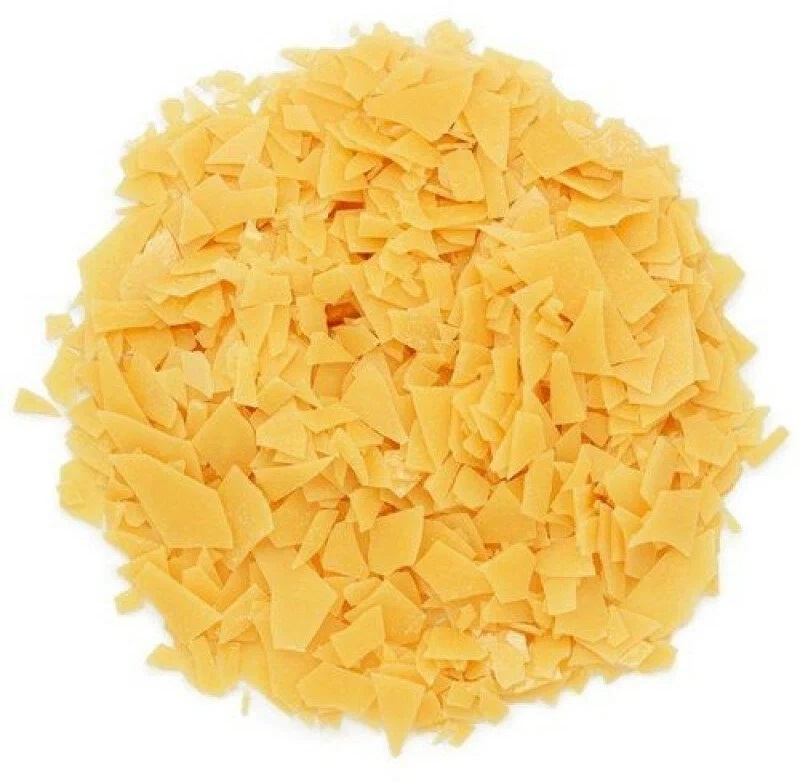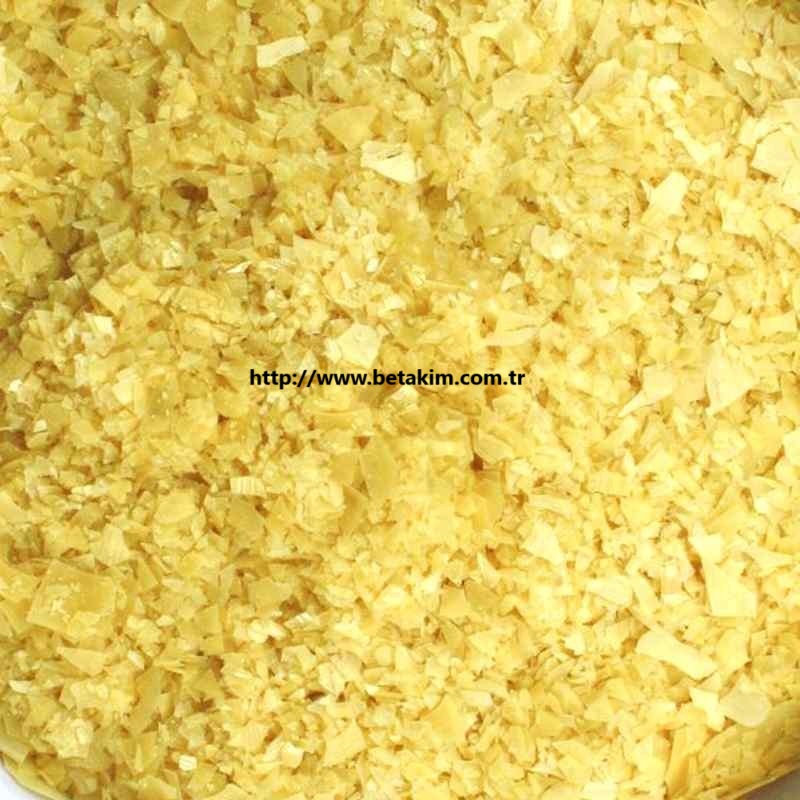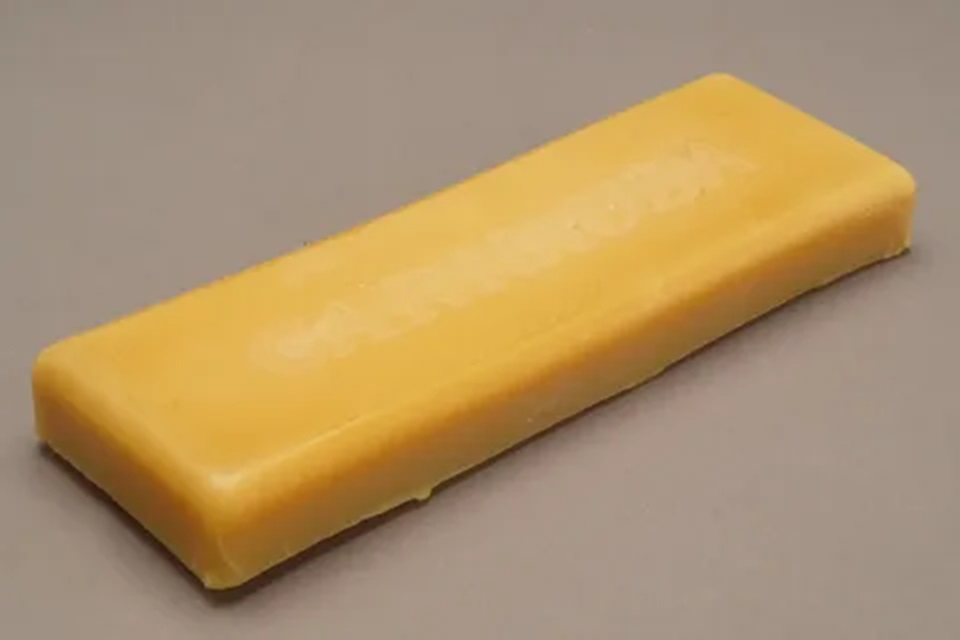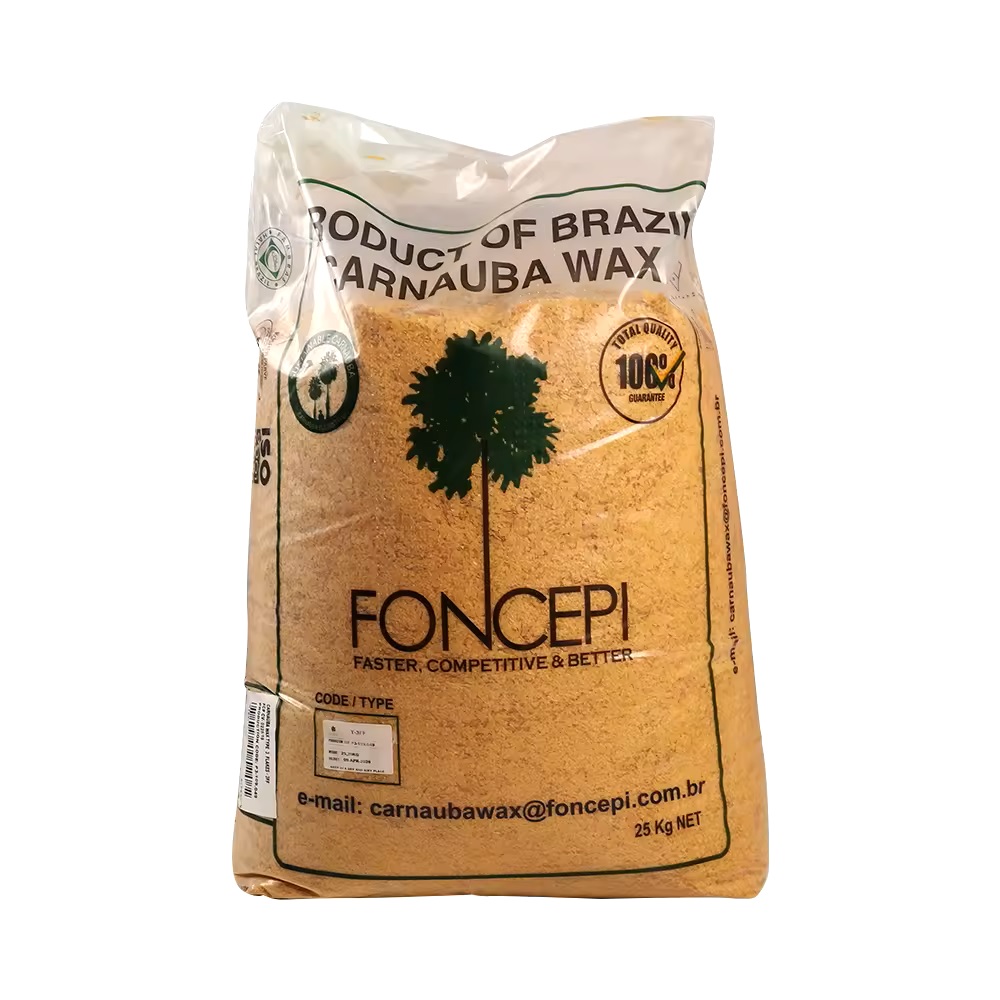We unleash your business potential by maximize the business innovation.
Send EmailCARNAUBA WAX, Karnauba Mumu, CARNAUBA WAX YELLOW, Copernicia cerifer, PALM MUMU, CEARA MUMSU, copernica cerifera cerifera, 8015-86-9
Carnauba wax
CAS: 8015-86-9
Molecular Formula:
Names and Identifiers
| Name | Carnauba wax |
| Synonyms | carnuba CARNAUBA carnubawax CARNAUBA WAX Carnauba wax WAX, CARNAUBA CARNAUBA WAX YELLOW CARNAUBA WAX, NO 1, YELLOW CARNAUBA WAX, REFINED, NO 1, YELLOW |
| CAS | 8015-86-9 |
| EINECS | 232-399-4 |
Physico-chemical Properties
| Density | 0.990-0.999 |
| Melting Point | 81-86 °C |
| Water Solubility | Soluble in diethyl ether, alkali, chloroform. Slightly soluble in boiling ethanol. Insoluble in water. |
| Solubility | Practically insoluble in water, soluble on heating in ethyl acetate and in xylene, practically insoluble in alcohol. |
| Appearance | Bright yellow solid |
| Specific Gravity | 0.990-0.999 |
| Color | Yellow |
| Merck | 14,1846 |
| Storage Condition | -20°C Freezer |
| Stability | Stable. Incompatible with strong oxidizing agents. |
| Sensitive | Easily absorbing moisture |
| Refractive Index | 1.4500 |
| MDL | MFCD00130724 |
| Physical and Chemical Properties | Brown to light yellow brittle wax, with resin-like cross-section, slightly odorous. The relative density is 0.997, the melting point is 82~85 ℃, and the iodine value is 13.5. It is soluble in chloroform, ether lye and fat above 40 ℃, slightly soluble in hot ethanol, insoluble in water. Adl 0~7 mg/kg(FAO/WHO,1994). |
| Use | Instead of beeswax. Insulation. Water repellent. Shoe polish. Fake paint. Source carnauba wax is a natural plant wax extracted from the leaves of palm trees that grow in northeastern Brazil, South America. It plays an important role in preventing the evaporation of water in dry areas. In these areas where industries are poor, carnauba wax plays a very important role in revitalizing the regional economy. The export of carnauba wax is attracting increasing attention as a bridge between agriculture and industry. Characteristics (1) Glossy is a major function of carnauba wax. It has been widely used in coating films in the fields of sugar-coated chocolate, granular chewing gum, nutritional food tablets, food and medicine, and has also been widely used in automobile wax, floor wax, leather polish, etc. (2) Brazil |
Risk and Safety
| Safety Description | 24/25 - Avoid contact with skin and eyes. |
| WGK Germany | 3 |
| TSCA | Yes |
| HS Code | 15211000 |
Standard
This line extracts the purified wax from the leaves of CopermWa cerz'/mz Mart.
Trait
- This product is light yellow or yellow powder, flakes or lumps.
- This product is soluble in hot xylene, soluble in hot ethyl acetate, almost insoluble in water or ethanol.
melting point
The melting point of this product (General rule 0612 second method) should be 80 ~ 86C.
acid value
take about 5g of this product, accurately weigh it, put it in a 250ml Erlenmeyer flask, add 100ml of xylene, heat it to completely dissolve, add 50ml of ethanol and bromothymol blue indicator solution 2. 5ml, heated to clarify, while hot with ethanol potassium hydroxide titration solution (O .lm o l/L) drop to the solution is green, and the titration result is corrected with blank test. The acid value (General rule 0713) should be 2 to 7.
saponification value
take about 3g of this product, weigh it accurately, put it in a 500ml Erlenmeyer flask, add 50ml of isopropanol-toluene (5: 4) mixture, and add 0 .5M o l/L potassium hydroxide ethanol solution 15ml, heated reflux for 3 hours, add phenolphthalein indicator liquid lm l, while hot with hydrochloric acid titration solution (0 .5M o l/L) titration, until the solution is pink and fades, heat to boiling, if the solution is pink again, then titrate to pink and fades, the results of the titration were corrected by a blank test. Saponification value (General rule 0713) should be 78~95.
iodine value
take about 1.8g of this product, weigh it accurately, put it in a 500ml dry iodine bottle, add 30ml of chloroform, heat and dissolve it in a water bath at 80°C IX, determination according to law (General rule 0713), iodine value should be 5~14.
Introduction
There's a pleasant smell. Soluble in ether, boiling ethanol and alkali, slightly soluble in 25 ℃ grease solvent, insoluble in water. Acid number 2-9. Iodine value 13.5. Saponification value 78-89.
Differential diagnosis
take this product about O . l g, 5ml of trimethyl methane was added and dissolved by heating, which was used as the test solution (taking advantage of the hot spot sample, about 10 mg of menthol, 10 mg of thymol and 10 ml of Menthyl acetate were separately taken, and placed in the same 20ml measuring flask, add toluene to dilute to the scale, shake, as a control solution. According to the thin layer chromatography (General 0502) test, draw the Test Solution 6 ^ 1 and the reference solution 2 ^ 1, and point on the same silica gel G thin layer plate respectively, with ethyl acetate • ■ three gas methane (2 > 98) as the developing solvent, expand, take out, dry, spray with a new 20% phosphomolybdic acid ethanol solution at 105t: heat for 10-15 minutes until the spots are clear. The control solution showed spots from low to high followed by dark blue menthol, red thymol and dark blue Menthyl acetate. The test solution should show a large spot (thirty alkanes) between the corresponding positions of menthol and luteolin, and multiple tiny spots are visible below it, A plurality of blue spots should be displayed between the corresponding positions of thymol and Menthyl acetate, and other spots should be displayed above the above spots, and the spot with the largest specific shift value (elder brother) should be clear, the origin should appear blue.
Exam
clarity and color of solution
take this product O .lg, add three gas methane 1 0 m l, heat to dissolve, check according to law (General rule 0901 and general rule 0902), the solution should be clear and colorless; If color, compared with the same volume of control solution (take 1.0 of potassium dichromate solution for color comparison, add 15ml of water, shake, then get), no deeper.
ignition residue
The l .O g of this product is taken for determination according to law (General rule 0841), and the residue left shall not exceed 0.25%.
Heavy metals
The residue left under the ignition residue item shall not contain more than 20 parts per million (ppm) of heavy metals after inspection by law (General Rule 0 8 2 1).
Category
pharmaceutical excipients, coating materials and release blockers.
Storage
sealed storage.
Reference Information
| Overview | the leaves and leaf buds of Brazilian palm are extracted and refined, hard and brittle, insoluble in water, it is a hard, high-melting, glossy wax. Its main component is palmitic acid beeswax Ester, fatty acid ester, wax acid and hydrocarbon component, which is composed of most of the twenty-six acid ester and a small amount of Diester and hydroxy fatty acid. |
| physical and chemical properties | density: 0.990-0.999g/cm3 Melting Point: 81-86 ℃ flash point: 270-330 ℃ refractive index: 1.45 iodine value: 5-14 saponification value: 78-95 unsaponifiable matter: 50-55% acetyl value: 51-60 ignition residue/% ≤ 0.25 arsenic (As)/% ≤ 0.0003 Lead/% ≤ 0.001 Heavy Metal (Pb)/% ≤ 0.002 solubility: insoluble in water, soluble in chloroform, toluene, ether Lye, slightly soluble in hot ethanol, Properties: brown to light yellow, flake or hard block taste: slightly odorous sample drawing of commodity: see figure below |
| Main purpose | ] Brazilian palm can be used as a film covering agent for candy, preserved fruit coating agent and glazing agent. Specific details are as follows: 1, used for food ingredients: polishing agent and polishing agent of chewing gum, soft and hard bean gum candy and chocolate; 2, used for building materials: Floor Wax: resulting in an unexpected polishing and lightening effect. Rubber Products: can enhance the hardness of rubber, prevent the sun crack generated by the rubber hardening. Especially for the building fabric is very useful. Asphalt and floor joint materials: to improve its water resistance and adhesion; Roof materials: to improve water resistance and durability. 3, daily areas: Shoe Polish: suitable for oil or bottom shoe polish polishing furniture: is still the bottom or bottom of the incomparable polishing agent. Leather Products: used for leather coating and preservation, so that the leather clothing and leather bag has a bright luster and can also be used as leather polishing and leather Oil Primer. Carbon paper and printing ink: known as the "blood of life" of the carbon paper industry ". 4. Industrial field: used for the exposed part of the package in the aircraft, to provide long-lasting protection and reduce surface friction, in order to improve its flight speed. Chemical Industry: use in a wide range of forms and formulations. Synthetic wax: enters the composition to make it an all-weather bright coating for cars, trucks, buses, and trains. Foundry: used in the process of wax and zinc plating for casting. 5. Agricultural field: the effect of Brazil Brown resting wax on the growth and development of brown rot and soft rot fungi in vitro and the effect of two pathogens on nectarine and plum fruit surface can inhibit brown rot and soft rot to some extent. 6, other uses: in soap, lipstick, ointment, candles, matches, paint (paint), varnish, plaster, artificial fruit, phonograph record production has a wide range of uses. |
| synthesis process | Brazilian palm is obtained by manual extraction through a complex process, and there is no disclosed preparation process at present. |
| determination of content | experiments by Zhicong de et al showed that the standard sample solution was directly derivatized with trimethylsilane (BSTFA), after the sample was extracted by ultrasonic heating, it was derivatized with BSTFA, and directly detected by hydrogen flame ionization detector (FID) to obtain good detection results. The specific detection parameters are set as follows: column RTX65-TG:30 m x 0.32mm (I. d.),0.25 m. Column temperature: based on 200 ℃, rise to 370 0C at 20 0C /min, keep for 20 min, run time 37 min; Inlet temperature 320 ℃; Detector temperature 370 ℃; the flow rate of hydrogen was 40 mu Min, the flow rate of air was 400 mu Min, and the injection volume was 1 μL. In order to achieve better separation effect on high boiling point substances, the program pressure-up mode is adopted at the same time: the column flow rate is 1.0 mL/min, and the column flow rate is maintained for 17 min, the column flow rate was increased to 100 mL/min at 2.0 mL/min 2 for 4 min, and the column flow rate was further increased to 100 mL/min at 3.0 mL/min 2. |
| ignition residue detection | take 1.0g of this product, according to the determination of Chinese Pharmacopoeia, the remaining residue shall not exceed 0.25%. |
| Heavy metal detection | the residue left under the item of ignition residue shall not contain more than 20% of heavy metals as determined by Chinese Pharmacopoeia. |
| toxicology data | 1. LD50 mice were orally administrated with 15g/kg (Guangdong Provincial Institute of Food Hygiene Supervision and Inspection). 2. Micronucleus test: negative (Guangdong Food Hygiene Supervision and Inspection Institute). 3, ADI 0~7 mg/kg(bw) FAO/WHO,1994) use the coating. |
| category storage | [category] pharmaceutical excipients. [storage conditions] place in a closed container and store in a cool and dry place to avoid contact with oxidized materials. [packing] 25kg, polyethylene plastic bag packaging |
| references | [1] R.C. Lo, P.J. Scherski, P.J. Weller, Junmin Zheng. Handbook of pharmaceutical excipients original Fourth Edition. Beijing: Chemical Industry Press, 2004 [2] Wu Shimin, editor-in-chief of Yin Delin. Concise Dictionary of fine-grained engineering. SHENYANG: Liaoning Science and Technology Press. 1999 [3] Ma Shichang, ed. Dictionary of organic compounds. Xi'an: Shaanxi Science and Technology Press. 1988 [4] compilation of daily chemical raw materials manual. Handbook of daily chemical raw materials. Beijing: China Light Industry Press. 1994 [5] Song Guo-AI, Yang Gen-yuan, Chen miwan-yi, compiler. Technical standards for cosmetic raw materials. Beijing: China Light Industry Press. 1994 [6] China food additive production and application Industry Association; Liu zhixie. Handbook of food additives. Beijing: China Light Industry Press. 1996 [7] Gao Hongbin, ed. Practical Dictionary of organic chemistry. Beijing: Higher Education Press. 1997 [8] Zhi zonde. Determination of carnauba wax in granular chewing gum and chocolate beans by high temperature gas chromatography [J]. Journal of Agricultural processing, 2010(09) [9] Fabr P. Control of brown rot and soft rot of plum and nectarine fruits by carnauba wax [J]. Preservation and processing, 2011(04) |
| toxicity | GRAS(FDA,§ 184.1978,2000). ADI 0~7(FAO/WHO,2001). |
| usage limit | GB 276-200l(g/kg): 0.18 chocolate beans; 0.6 candy; GMP gum base. |
| Use | as a coating agent, can be used for candy, preserved fruit coating agent and glazing agent. candy, preserved fruit coating agent and glazing agent; Gum Gum base; Perfume carrier; Surface treatment agent; Acidity regulator. The EEC limits the use of chocolate products. By FDA,§ 184.1978(1994.) can be used as anti-caking agent, polishing agent, used in chocolate, baked goods, soft candy, gum, confectionery products, frosting, fruit juice, broth sauce, also used to enhance the hardness and brightness of other edible waxes, dosage GMP. |
| production method | the leaves and leaf buds (present on the surface) from coperncia cereriferra extracted and refined. extracted from the leaves of Brazil wax Brown, the refined product is available. |



